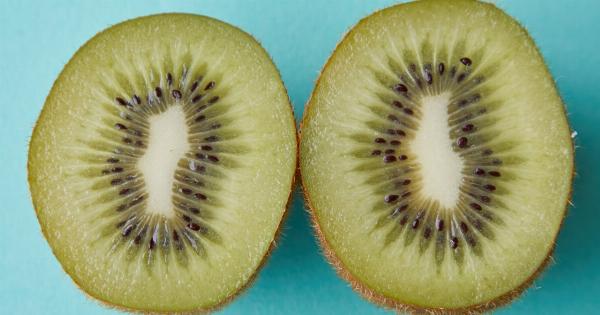Gray hair is a natural part of the aging process, but for some individuals, the graying occurs at a much faster rate.
Until recently, scientists were unsure about the specific mechanisms behind rapid graying, but new research has shed light on this fascinating phenomenon. In this article, we will delve into the latest studies that explain how hair can turn gray rapidly and explore the potential implications of these findings.
The Role of Melanin in Hair Pigmentation
To understand why hair turns gray, it is crucial to comprehend the role of melanin in hair pigmentation. Melanin is the pigment responsible for the color of our hair, skin, and eyes.
Two main types of melanin contribute to hair color: eumelanin, which produces brown and black shades, and pheomelanin, which results in blonde and red hues.
Throughout our lives, specialized cells called melanocytes produce melanin in hair follicles. These melanocytes transfer melanin to the cells that form the hair shaft, giving it its characteristic color.
However, as we age, the activity of melanocytes diminishes, leading to a reduction in melanin production. Consequently, without sufficient melanin, hair starts to turn gray or white.
The Genetics of Premature Graying
Not all hair graying is related to age, as some individuals experience premature graying. Premature graying occurs when hair starts to turn gray before the age of 20 in Caucasians or before 30 in people of African descent.
Researchers have discovered that genetics play a critical role in premature graying.
Recent studies have identified certain genes associated with premature graying. One of these genes is called the IRF4 gene, which regulates melanin production in melanocytes.
Mutations in this gene can lead to an accelerated loss of melanocytes, resulting in hair turning gray prematurely.
Another gene linked to premature graying is the PRSS53 gene. This gene is involved in hair formation and pigmentation, and mutations in PRSS53 can trigger the onset of graying at an early age.
Furthermore, a study published in Nature Communications found that a gene called FOXL2 is associated with gray hair in both men and women. The researchers discovered that this gene is involved in hair and skin development.
Mutations in FOXL2 can lead to the premature depletion of melanocytes, causing hair to turn gray more rapidly than average.
Stress and Gray Hair
While genetics play a significant role in premature graying, environmental factors and lifestyle choices can also impact hair pigmentation. One such factor is stress.
Stress has long been associated with various health issues, but its relationship with hair graying has only recently been explored. Research suggests that chronic and prolonged stress can lead to accelerated hair graying.
In a study conducted at Harvard University, researchers discovered a connection between stress and gray hair by examining mice.
They found that stress activates the sympathetic nervous system, which releases the chemical norepinephrine in hair follicles. This chemical disrupts the normal pigment-producing function of melanocytes, ultimately leading to gray hair.
Moreover, the study also revealed that stress could result in the depletion of melanocyte stem cells, accelerating the graying process.
Scientists believe that this occurs due to an overproduction of free radicals – unstable molecules that damage cells – triggered by stress.
Smoking and Hair Graying
Another intriguing aspect related to rapid hair graying is smoking. Numerous studies have shown a strong association between smoking and premature graying.
A study published in the Journal of the American Academy of Dermatology examined the relationship between smoking and hair graying in more than 200 participants.
The researchers concluded that smokers were more than twice as likely to develop premature gray hair compared to non-smokers. The exact mechanisms behind this association are not entirely understood, but it is believed that smoking promotes oxidative stress, which can have detrimental effects on melanocytes.
Furthermore, smoking constricts blood vessels and decreases blood flow to the skin, potentially affecting hair follicles’ health and function. These factors combined may contribute to the accelerated graying observed in smokers.
Vitamin Deficiencies and Graying Hair
Recent research has suggested a correlation between certain vitamin deficiencies and premature graying. Specifically, deficiencies in vitamins B12, D, and E have been found to be associated with hair graying.
Vitamin B12, also known as cobalamin, is essential for maintaining healthy hair follicles and promoting the production of melanin. A deficiency in this vitamin can impair melanin synthesis, leading to premature graying.
Vitamin D, often referred to as the “sunshine vitamin,” plays a crucial role in hair health, pigmentation, and growth. Studies have shown that individuals with low vitamin D levels are more likely to experience premature graying.
Vitamin E is known for its antioxidant properties and its ability to neutralize harmful free radicals. These free radicals can damage melanocytes, leading to accelerated graying.
Adequate vitamin E intake can help protect melanocytes from oxidative stress and preserve hair pigmentation.
Medical Conditions and Hair Graying
Gray hair can also be a manifestation of certain medical conditions. Autoimmune disorders, such as vitiligo and alopecia areata, have been associated with premature graying.
Vitiligo is a skin condition characterized by the loss of melanocytes, resulting in the development of white patches. It is often accompanied by premature graying of the hair in the affected areas.
Alopecia areata is an autoimmune condition where the immune system attacks hair follicles. This can lead not only to hair loss but also to premature graying of the remaining hair.
Furthermore, thyroid disorders, particularly hyperthyroidism and hypothyroidism, can also influence the pigmentation of hair. Both conditions can disrupt melanin production and contribute to hair graying.
The Future of Preventing and Reversing Gray Hair
While the recent research has provided valuable insights into the causes of rapid graying, finding ways to prevent or reverse gray hair entirely remains an ongoing challenge. Nonetheless, scientists are making progress in this area.
One promising avenue is the development of drugs that target the genes associated with premature graying. By identifying drugs that can modulate the activity of these genes, researchers hope to slow down or halt the graying process.
Another approach involves regenerative medicine and stem cell research. Scientists are exploring the potential of using stem cells to rejuvenate melanocytes and restore their pigmentation function.
Although this is still largely experimental, it holds promise for future treatments for gray hair.
Additionally, a better understanding of the role of various vitamins and nutrients in melanin production could lead to targeted dietary interventions or supplementation to prevent or delay hair graying.
In Conclusion
Gray hair is a natural part of the aging process, but for those who experience rapid graying, the underlying causes can often be traced back to genetics, environmental factors, or medical conditions.
Recent research has revealed the involvement of specific genes in premature graying, as well as the impact of stress, smoking, and vitamin deficiencies on hair pigmentation.
Although there is currently no foolproof method for preventing or reversing gray hair, ongoing scientific advancements offer hope for future solutions.
By understanding the mechanisms behind rapid graying, researchers are moving closer to developing effective strategies to slow down graying or restore hair pigmentation.


























